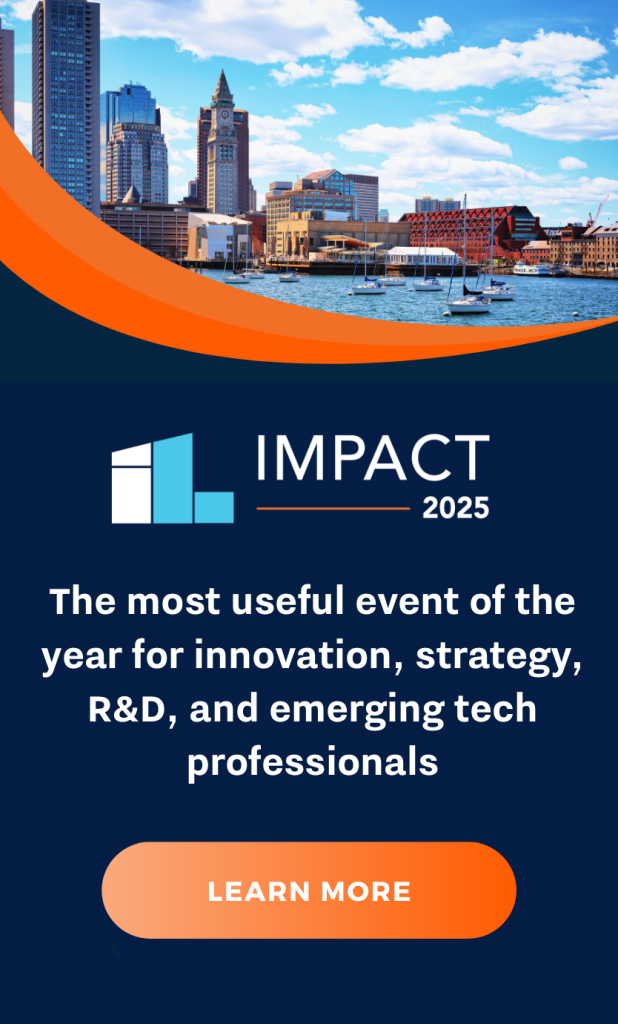Artificial intelligence is the shiny new object poised to accelerate the “front end of innovation” process. A critical success factor in delivering real value, however, is a robust “back end of innovation” process. If your incubation methods and tools are fractured or inconsistent, at best you’ll end up with a (bigger) bottleneck in your innovation pipeline. At worst, you’ll run the risk of failing to deliver a return on your AI-enhanced front-end investment.
In this webcast replay, David Matheson and Doug Williams from SmartOrg delve into how a best practice back end of innovation process will help you:
- Prioritize work both within a project and across the innovation portfolio
- De-risk projects to build confidence in the business case and secure real funding for implementation
- Improve throughput, accelerate outcomes, and fully realize the potential of AI transformation at the front end.
One poll conducted during the webcast asked about activities that have contributed to a perception of “innovation theater.” The top answer: internal idea challenges or crowdsourcing, followed by hackathons.

Another poll conducted during the webcast asked about the strength of incubation processes in place at participants’ organizations.

Here are ten key points from the webcast (with summarization by ChatGPT):
- Critical Thinking in Innovation: David Matheson stressed the importance of critical thinking across all dimensions of innovation, not just technology. Innovators must think broadly and deeply about customer needs, economic considerations, and the overall business environment.
- Real Funding and Evidence-Based Investment: Doug Williams highlighted that successful innovation requires real funding, which means building a strong business case backed by evidence. Innovators need to learn to speak the language of finance to secure necessary investments.
- Incubation Process: A strong incubation process is essential. This involves separating the wheat from the chaff at the entry point, ensuring the quality of proposals exiting the process, and effectively managing the elimination and upgrade phases.
- Avoiding Innovation Theater: The speakers warned against the pitfalls of innovation theater, where activities like hackathons, idea challenges, and innovation labs generate excitement but fail to produce meaningful outcomes. They emphasized the need for a structured approach to convert ideas into tangible results.
- Planning for Pivots: Innovation often requires flexibility and the ability to pivot based on new information or changing circumstances. This involves planning for potential changes in direction and having conversations about the necessary adjustments.
- Empathy with Stakeholders: Understanding and addressing the concerns of various stakeholders is crucial. Innovators must align their projects with the interests and needs of those who hold the purse strings and have decision-making power.
- Balancing Discovery and Incubation: While discovery activities are important for generating ideas, a balanced approach that also emphasizes incubation is necessary to move from concept to implementation.
- Prioritizing Learning: Instead of focusing solely on project progress, prioritizing learning and experimentation is key. This involves conducting experiments to validate assumptions and refine the innovation process.
- AI as a Tool for Innovation: AI can enhance discovery by providing new insights and perspectives, but it should be used as a tool to aid critical thinking rather than a solution in itself. The speakers cautioned against relying on AI without a robust incubation process.
- Committed Innovators and Social Commitment: Successful innovation often depends on having committed innovators who are willing to take risks and drive projects forward. Building a team with social commitment and followers who believe in the vision is vital.
To watch the webcast, click “play” above. You can also download SmartOrg’s slides in PDF form below.
Document Download
Click filename(s) to download and view.



























































